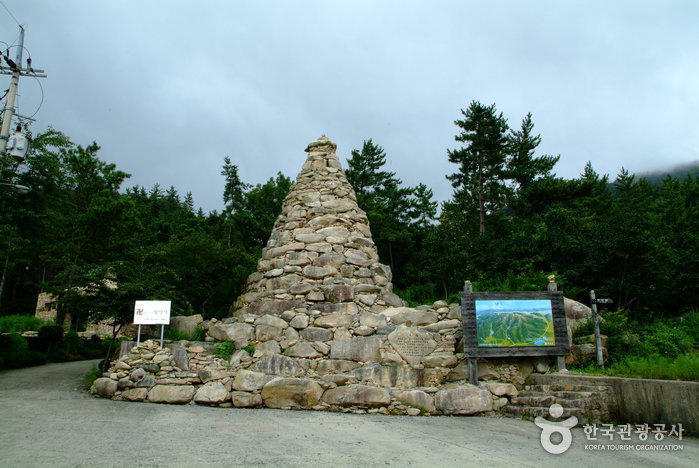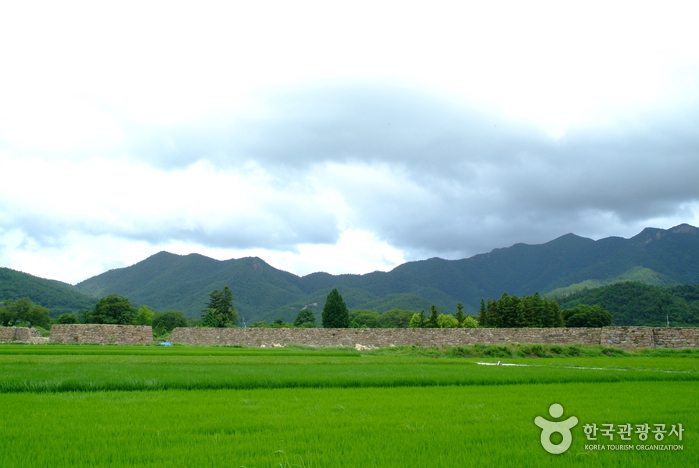Cheongwansan Literature Park (천관산 문학공원)
16.9Km 2019-10-03
Yeonji-ri, Jangheung-gun, Jeollanam-do
+82-61-860-0224
Cheongwansan Literature Park is located on the outskirts of Cheongwansan Mountain in Jangheung. The mountain itself is known for a unique array of odd-shaped rocks and ridges, attracting many visitors year-round.
Jangheung is nicknamed ‘Literature Town’ for its history of producing outstanding writers. The park commemorates these writers and their development of the modern style of Korean poems, novels, and essays (including Song Gi-suk, Han Seung-won, and Lee Cheong-jun) with a total of 54 monuments; each displaying the best of each writer’s works. A separate monument (7 stories/15m) contains works and handwritten manuscripts by 35 writers and their chronologies in capsules. In addition, over 460 stone towers leading to Tapsansa Temple await visitors.
Cheongwansan Provincial Park (천관산도립공원)
18.2Km 2021-12-07
Cheongwansan-gil, Jangheung-gun, Jeollanam-do
+82-61-867-7075
Cheongwansan Provincial Park is located on Cheongwansan Mountain, which is considered one of the best mountains in southwest Korea, along with Jirisan, Naejangsan, Wolchulsan and Naebyeonsan mountains. The name of Cheongwan comes from the fact that the surrounding boulders resemble a thorny crown worn by an emperor. In autumn, fields of silver grass unfold around the mountain peak, allowing for the Cheongwansan Silver Grass Festival to take place on Yeondaebong (silver grass plain). Also, from the top of the mountain, several grand landmarks like Dadohae archipelago, Wochulsan Mountain and Mudeungsan Mountain in nearby cities can be seen. On a clear day, visitors can even see Hallasan Mountain on Jeju Island. In the middle of the mountain is Cheongwansa Temple, which houses precious cultural properties including Cheongwansa Three-Story Pagoda (Treasure No. 795), Cheongwansa Seokdeung (stone lantern), Five-Story Pagoda, and Jangheung Tapsansaji Seokdeung (stone lantern).
Cheongwansan Eulalia Festival (천관산 억새제)
18.8Km 2021-01-22
Gwansan-eup, Jangheung-gun, Jeollanam-do
• 1330 Travel Hotline: +82-2-1330
(Korean, English, Japanese, Chinese) • For more info: +82-61-863-7071
Cheongwansan Eulalia Festival takes place between mid-September and mid-October when the fields turn white or gray with sunlight. The best time of the day to take in the beauty of the eulalia field is before nine in the morning and after five in the afternoon. The view of eulalia waves in the breeze at Cheongwansan Mountain is a sight to be seen.
Military Headquarters of Jeolla-do Province, Gangjin (강진 전라병영성)
19.8Km 2020-05-19
175, Byeongyeongseong-ro, Gangjin-gun, Jeollanam-do
+82-61-430-3362
Jeolla Byeongyeongseong is a fortress located in Seongdong-ri, Byeongyeong-myeon, Gangjin-gun, Jeollanam-do. It played an important role as the main headquarter of the entire southwest region of the military in the Joseon era during the Japanese Invasion of Korea and Jeongyujaeran (the 2nd Japanese Invasion).
Built in 1414 during the time of King Taejong (17th year of his rule), the fortress spans over a 1,060m in length and has kept its original bottom base intact. Three Sugumun main gates, seven Ongseong, building sites, foundation stones, and 25 tombstones also remain. In addition, it is the best preserved fortress among the remaining fortresses in the Namhae area. Hamel, a Dutch sailor, drifted in the site from 1656 during the 7th year of King Hyojeong to 1663 during the 4th year of King Hyeonjeong in the Joseon dynasty and wrote a novel named ‘The Journal of Hendrick Hamel’ after visiting the area. His novel explained Korean policy, culture, and traditions of the time to the Western world.



 English
English
 한국어
한국어 日本語
日本語 中文(简体)
中文(简体) Deutsch
Deutsch Français
Français Español
Español Русский
Русский